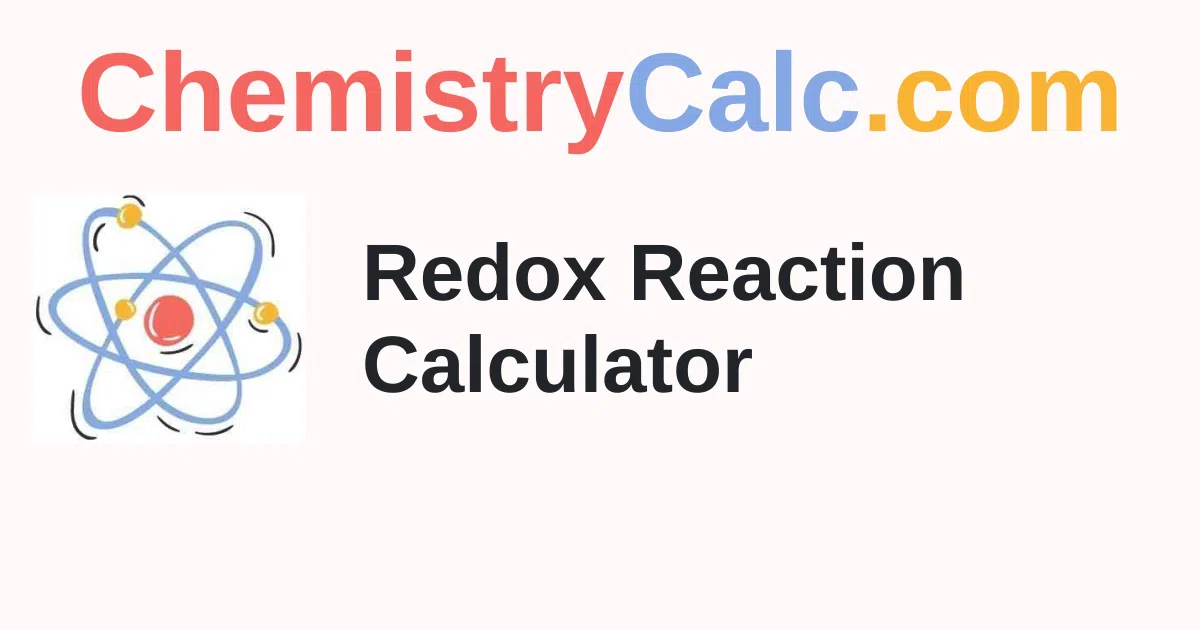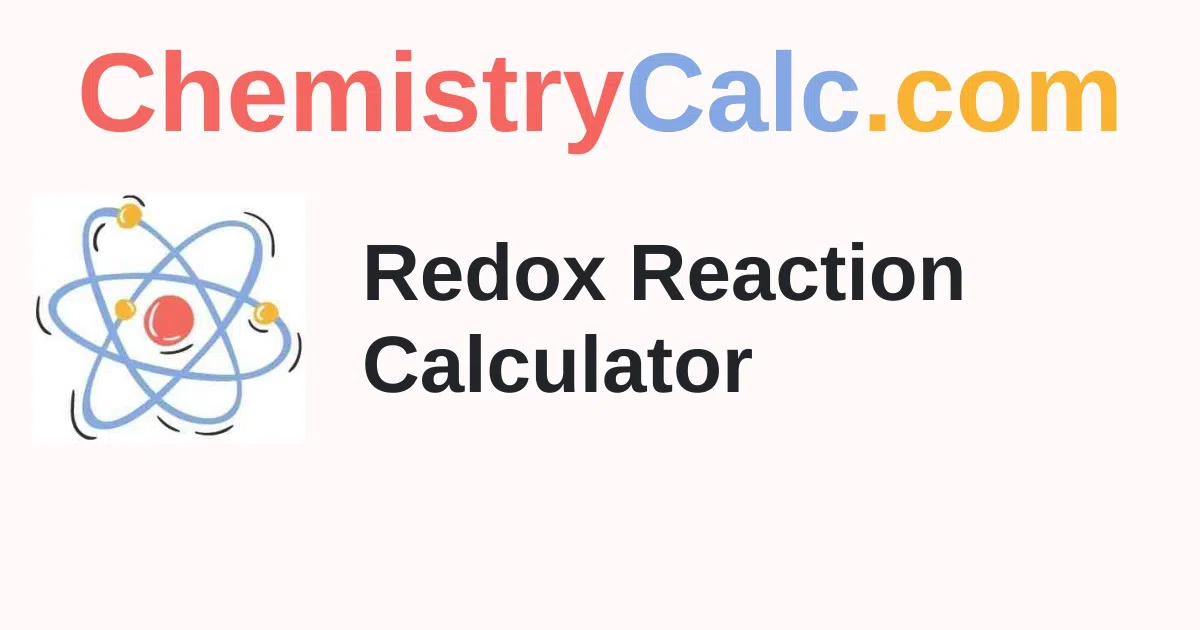Redox Reaction Calculator
Our free Redox Reaction Calculator produces how much reduction and oxidation takes place in a chemical reaction. It takes standard potential, a number of electrons transferred, the ratio of the concentration of product versus reactant and temperature details to give the redox reaction of the chemical reaction.
Steps to Calculate Redox Reaction
Below-mentioned is the step by step process on how to solve the redox reaction of a chemical reaction.
- Get the standard potential, the number of electrons transferred during the reaction, temperature, and ratio of the concentration of product versus reactant details.
- Divide temperature by the number of electrons transferred.
- Find the log of the ratio of the concentration of product versus reactant value.
- Multiply the division result by the log result value.
- Subtract the obtained product from standard potential to know the redox reaction value.
What are Redox Reactions?
A redox reaction is defined as a chemical reaction where electrons are transferred between two reactions participating in it. This process of transferring electrons can be identified by observing the changes in the oxidation states of the reacting species.
The loss of electrons and the corresponding increase in the oxidation state of the reactant is called oxidation. The gain of electrons and the corresponding decrease in the state of the reactant is called reduction.
The electron-accepting species that undergo a reduction in redox reactions are called oxidizing agents. The electron-donating species that tend to hand over electrons are called reducing agents.
Redox Reaction Formula
The redox reaction formula is E = E° - (RT/nF)lnQ
Where,
E is the redox reaction
E° is the standard potential at 298 K
T is the temperature
n is the number of electrons transferred
Q is the ratio of the concentration of product versus reactant
Redox Reaction Example:
Question: Identify the oxidising agent nad reducing agent in the reaction.
2FeCl3 + H2S → 2FeCl2 + S + 2HCl
Answer:
The oxidising agent is the species reduced.
Reducing agent is the species oxidised.
Oxiding agents are I2, FeCl3, N2
Reducing agents are Na2S2O3, H2S
Chemistrycalc.Com has a plenty of calculators like mole fraction, osmotic pressure, molecular weight, atomic mass nd many more. Check them and use whenever required.
Applications of Redox Reaction
Redox reactions have various everyday and industrial applications. It can be used in electrochemistry, combustion, photosynthesis and so on. Some of the everyday applications are as follows:
- Electroplating is a process that uses redox reactions.
- Production of few chemicals is also based on electrolysis that is based on redox reactions.
- The surfaces of many metals can be protected from corrision.
- Nitric acid, component of fertilizers is produced from the oxidation reaction of ammonia.
FAQ’s on Redox Reaction Calculator
1. What is meant by redox reaction?
Redox reaction is a combination of oxidation and reduction processes. In the redox reaction, the reactant will undergo a change in the state of oxidation. Here, both reduction and oxidation take place simultaneously.
2. Is every chemical reaction a redox reaction?
No, every chemical reaction is not a redox reaction. Reactions such as double decomposition, precipitation reactions, acid-base neutralization reactions are non-redox reactions.
3. What are the steps of balancing redox reactions?
We have two different ways of balancing the redox reactions. One is using the change in oxidation number of the oxidizing agent, reducing agent and the second is dividing the redox reaction into two half-reactions, one-half oxidation, other reduction.
4. What are the uses of redox reactions?
The real-life uses of redox reaction are given here:

